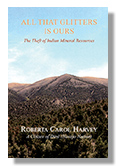 ALL THE GLITTERS IS OURS
ALL THE GLITTERS IS OURSThe Theft of Indian Mineral Resources
By Roberta Carol Harvey, A Citizen of the Navajo Nation
This book centers on the wars American Indians fought to counter the theft of Indian copper and lead in the Great Lakes region and gold and silver in the Pacific Northwest, the Black Hills, the Great Plains and the Southwest by the invasive flood of white settlers and military forces. U.S. General Pope in 1878 stated that it was absolutely imperative that Indian Nations realize the United States’ premeditated and calculated determination to dispossess the “savage” and occupy his lands and that “it is certain that the larger part of the country claimed by him will, in some manner, pass into the possession of the white race.” The insatiable drive for a continental empire resulted in the iron triangle of the federal government, the military and big business working in concert to steal Indian mineral lands. They knowingly and willfully unleashed the pioneer vigilantes to commandeer Indian resources. The Commissioner of Indian Affairs J.Q. Smith wrote in 1876: “Wherever an Indian reservation has on it good land, or timber, or minerals, the cupidity of the white man is excited, and a constant struggle is inaugurated to dispossess the Indian, in which the avarice and determination of the white man usually prevails.” “Every art, trick, and device of the unscrupulous land pirate is resorted to,” admonished Colonel Preston. Yet it was brutal warfare, massacres, disease, and starvation that decimated Indian populations, leaving them destitute, to be replaced by industrial tycoons, timber barons, mineral magnates, and capital investors profiting from the “savages’” minerals in the bowels of the Earth.
The author, a citizen of the Navajo Nation, is an attorney and historian. She holds BA, MBA and JD degrees from the University of Denver and is a lecturer on Indian law related to policy, land, water and natural resources. She is committed to Indian sovereignty, ending assimilation policies and promoting accurate education. She is also the author of The Earth is Red: The Imperialism of the Doctrine of Discovery; The Eclipse of the Sun: The Need for American Indian Curriculum in High Schools; The Iron Triangle: Business, Government, and Colonial Settlers’ Dispossession of Indian Timberlands and Timber; Warrior Societies: A Manifesto; and Social Contributions of Colorado’s American Indian Leaders For the Seven Generations to Come, all from Sunstone Press.
Softcover:
eBook:
Hardcover:
6 x 9
ISBN: 978-1-63293-629-5
776 pp.,$52.95
6 x 9
ISBN: 978-1-63293-633-2
766 pp.,$44.95
ISBN: 978-1-61139-731-4
776 pp.,$5.99
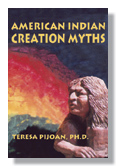 AMERICAN INDIAN CREATION MYTHS
AMERICAN INDIAN CREATION MYTHS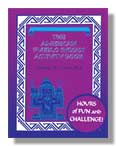 THE AMERICAN PUEBLO INDIAN ACTIVITY BOOK
THE AMERICAN PUEBLO INDIAN ACTIVITY BOOK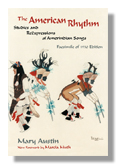 THE AMERICAN RHYTHM
THE AMERICAN RHYTHM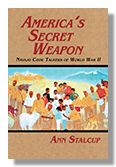 AMERICA’S SECRET WEAPON
AMERICA’S SECRET WEAPON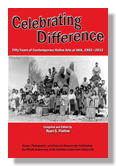 CELEBRATING DIFFERENCE
CELEBRATING DIFFERENCE CHOKECHERRY HUNTERS AND OTHER POEMS
CHOKECHERRY HUNTERS AND OTHER POEMS COYOTE TALES FROM THE INDIAN PUEBLOS
COYOTE TALES FROM THE INDIAN PUEBLOS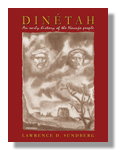 DINETAH: AN EARLY HISTORY OF THE NAVAJO
DINETAH: AN EARLY HISTORY OF THE NAVAJO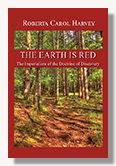 THE EARTH IS RED
THE EARTH IS RED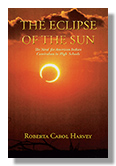 THE ECLIPSE OF THE SUN
THE ECLIPSE OF THE SUN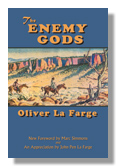 THE ENEMY GODS
THE ENEMY GODS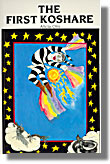 THE FIRST KOSHARE
THE FIRST KOSHARE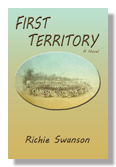 FIRST TERRITORY
FIRST TERRITORY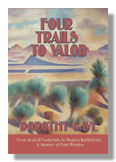 FOUR TRAILS TO VALOR
FOUR TRAILS TO VALOR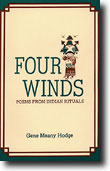 FOUR WINDS
FOUR WINDS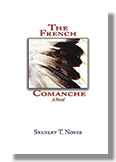 THE FRENCH COMANCHE
THE FRENCH COMANCHE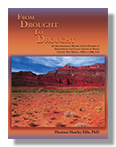 FROM DROUGHT TO DROUGHT
FROM DROUGHT TO DROUGHT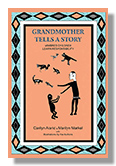 GRANDMOTHER TELLS A STORY
GRANDMOTHER TELLS A STORY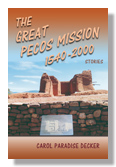 THE GREAT PECOS MISSION, 1540-2000
THE GREAT PECOS MISSION, 1540-2000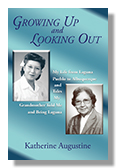 GROWING UP AND LOOKING OUT
GROWING UP AND LOOKING OUT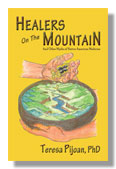 HEALERS ON THE MOUNTAIN
HEALERS ON THE MOUNTAIN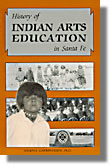 HISTORY OF INDIAN ARTS EDUCATION IN SANTA FE, 1890-1962
HISTORY OF INDIAN ARTS EDUCATION IN SANTA FE, 1890-1962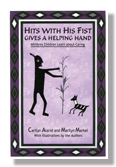 HITS WITH HIS FIST GIVES A HELPING HAND
HITS WITH HIS FIST GIVES A HELPING HAND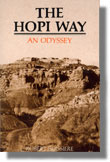 THE HOPI WAY
THE HOPI WAY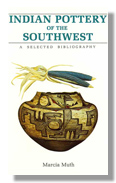 INDIAN POTTERY OF THE SOUTHWEST
INDIAN POTTERY OF THE SOUTHWEST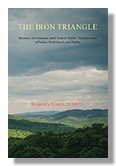 THE IRON TRIANGLE
THE IRON TRIANGLE JOSEPH IMHOF
JOSEPH IMHOF KACHINA TALES FROM THE INDIAN PUEBLOS
KACHINA TALES FROM THE INDIAN PUEBLOS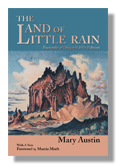 THE LAND OF LITTLE RAIN
THE LAND OF LITTLE RAIN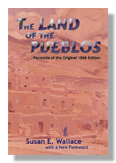 THE LAND OF THE PUEBLOS
THE LAND OF THE PUEBLOS LIFE UNDER THE SUN
LIFE UNDER THE SUN LOS COMANCHES
LOS COMANCHES MARIA MAKING POTTERY
MARIA MAKING POTTERY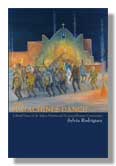 THE MATACHINES DANCE
THE MATACHINES DANCE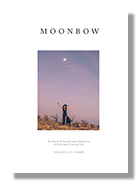 MOONBOW
MOONBOW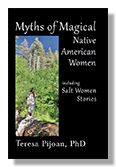 MYTHS OF MAGICAL NATIVE AMERICAN WOMEN INCLUDING SALT WOMAN STORIES
MYTHS OF MAGICAL NATIVE AMERICAN WOMEN INCLUDING SALT WOMAN STORIES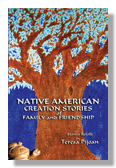 NATIVE AMERICAN CREATION STORIES OF FAMILY AND FRIENDSHIP
NATIVE AMERICAN CREATION STORIES OF FAMILY AND FRIENDSHIP NEITHER RED NOR WHITE
NEITHER RED NOR WHITE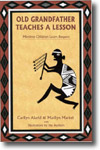 OLD GRANDFATHER TEACHES A LESSON
OLD GRANDFATHER TEACHES A LESSON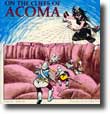 ON THE CLIFFS OF ACOMA
ON THE CLIFFS OF ACOMA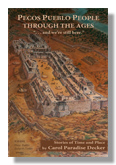 PECOS PUEBLO PEOPLE THROUGH THE AGES
PECOS PUEBLO PEOPLE THROUGH THE AGES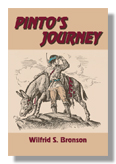 PINTO'S JOURNEY
PINTO'S JOURNEY PUEBLO AND NAVAJO INDIAN LIFE TODAY
PUEBLO AND NAVAJO INDIAN LIFE TODAY PUEBLO INDIAN WISDOM
PUEBLO INDIAN WISDOM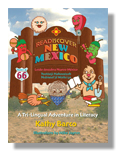 READiscover NEW MEXICO
READiscover NEW MEXICO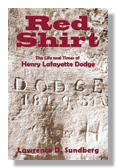 RED SHIRT
RED SHIRT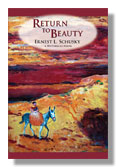 RETURN TO BEAUTY
RETURN TO BEAUTY SONGS OF THE TEWA
SONGS OF THE TEWA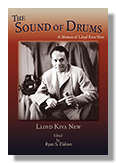 THE SOUND OF DRUMS
THE SOUND OF DRUMS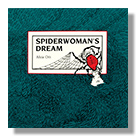 SPIDERWOMAN'S DREAM
SPIDERWOMAN'S DREAM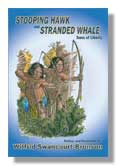 STOOPING HAWK AND STRANDED WHALE
STOOPING HAWK AND STRANDED WHALE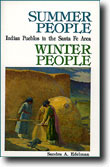 SUMMER PEOPLE / WINTER PEOPLE
SUMMER PEOPLE / WINTER PEOPLE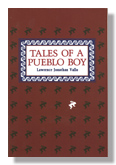 TALES OF A PUEBLO BOY
TALES OF A PUEBLO BOY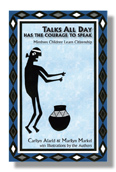 TALKS ALL DAY HAS THE COURAGE TO SPEAK
TALKS ALL DAY HAS THE COURAGE TO SPEAK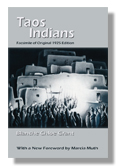 TAOS INDIANS
TAOS INDIANS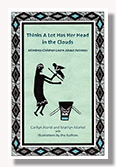 THINKS A LOT HAS HER HEAD IN THE CLOUDS
THINKS A LOT HAS HER HEAD IN THE CLOUDS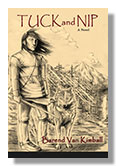 TUCK AND NIP
TUCK AND NIP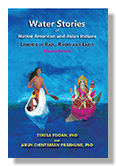 WATER STORIES OF NATIVE AMERICAN AND ASIAN INDIANS
WATER STORIES OF NATIVE AMERICAN AND ASIAN INDIANS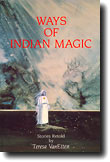 WAYS OF INDIAN MAGIC
WAYS OF INDIAN MAGIC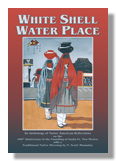 WHITE SHELL WATER PLACE
WHITE SHELL WATER PLACE